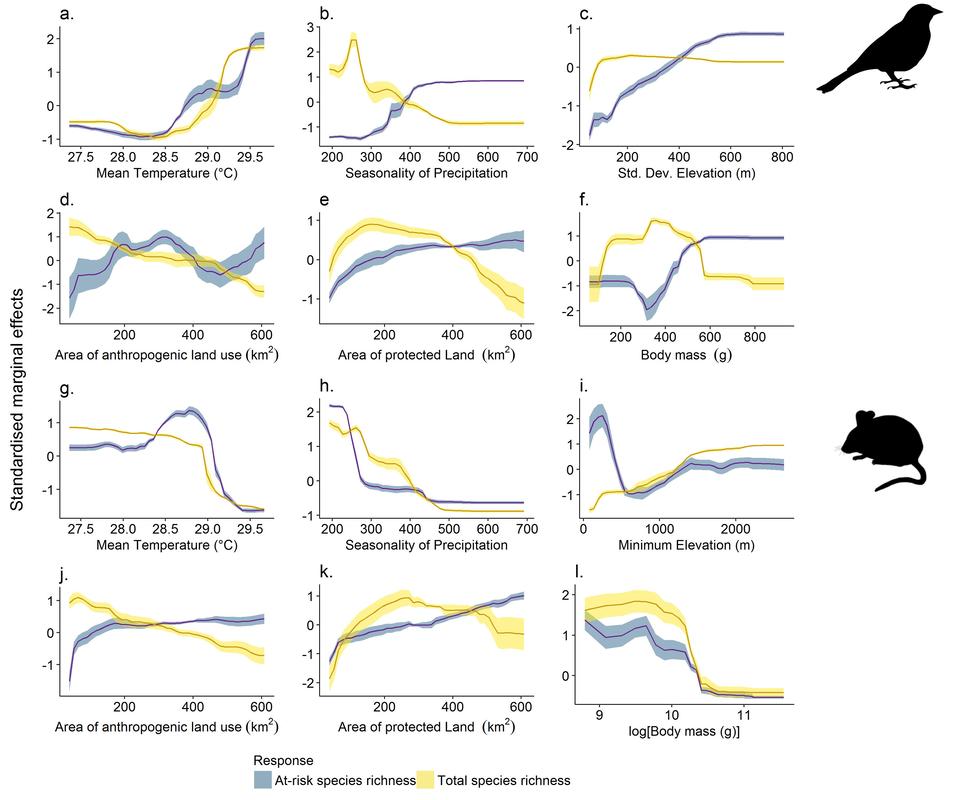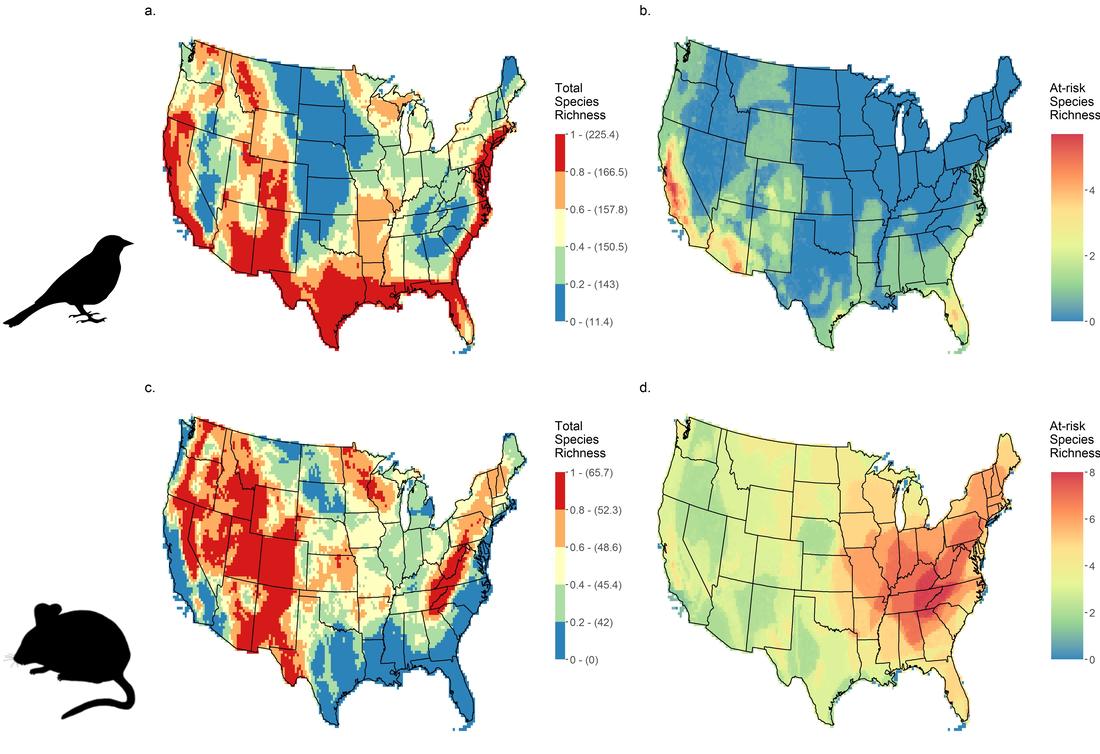Our new paper in Conservation Letter addresses these questions, identifying the features of an area that influence how many threatened species occur there. To do this, we collaborated with Curt Flather from the USDA Forest service to examine the distribution of threatened birds and mammals across the contiguous United States (Fig.1). We found that environmental factors, such as temperature and precipitation, are of far greater importance in determining threatened species richness than either the effects of human activities or the biological characteristics of the species present (e.g. their body mass, life span etc.).

Finally, and importantly, the results of our study can be used to help the USDA forest service with their scenario planning. By pairing these results with information on possible environmental change, we can now identify where threatened species may occur in future. This information can then feed into conservation planning to ensure that planned interventions are future-proof, maximising the benefits for nature conservation.

 RSS Feed
RSS Feed
